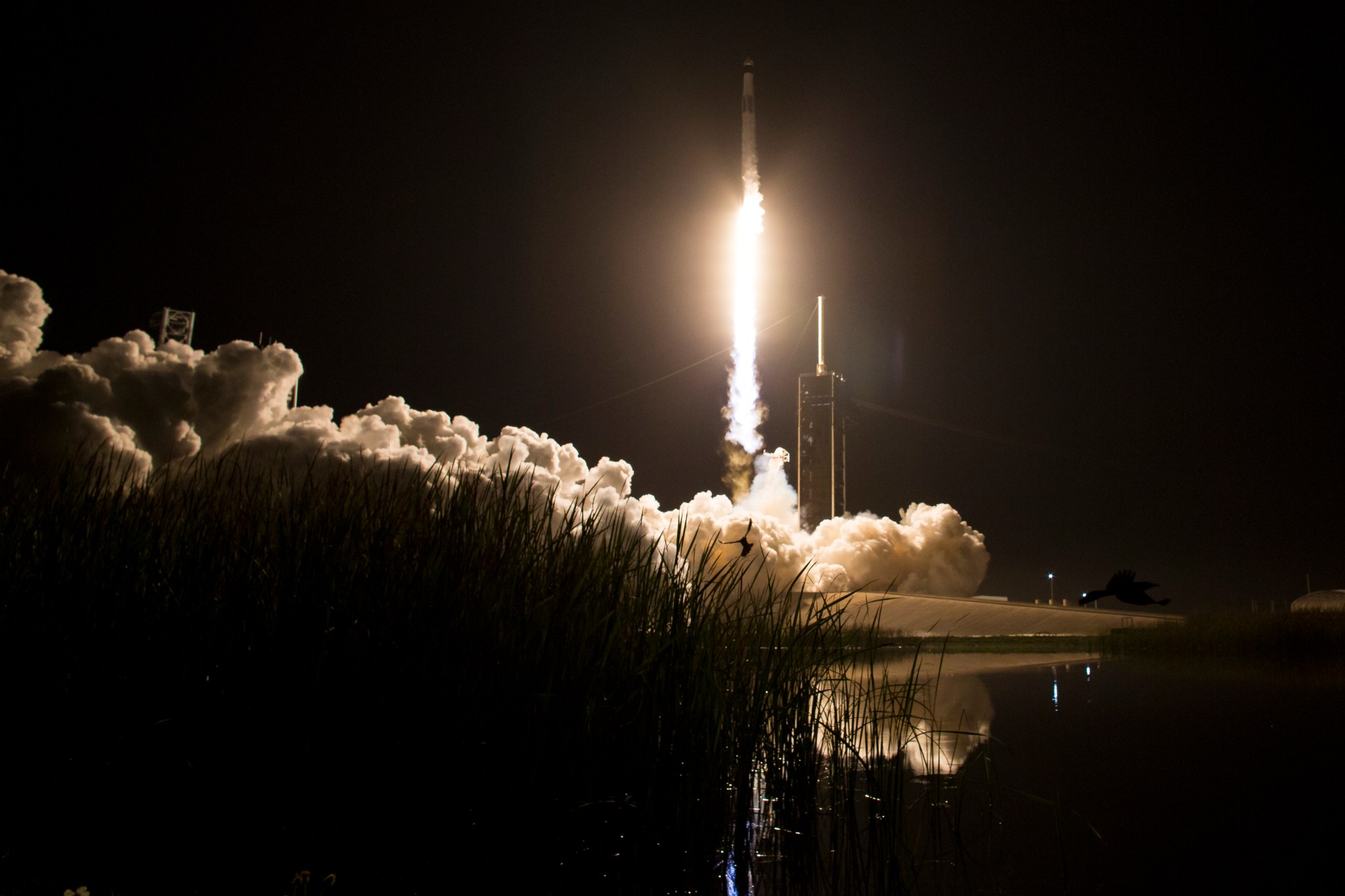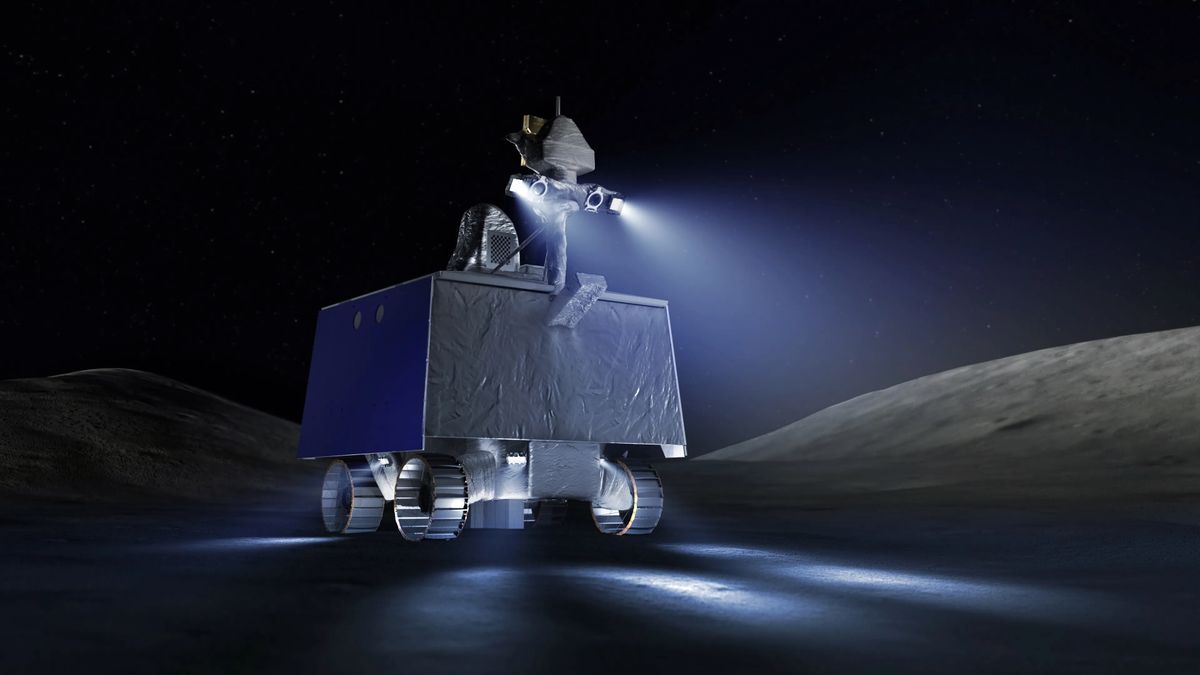In honor of Women’s History Month 2024 and those who paved the way for them, hundreds of female staff – from artists to administrative support, educators to engineers, and scientists to safety officers – gathered in front of the Katherine G. Johnson Computational Research Facility at NASA’s Langley Research Center in Hampton, Virginia, on Feb. 6, 2024.
Read MoreMonth: March 2024
NASA’s SpaceX Crew-8 Launches to International Space Station
A SpaceX Falcon 9 rocket carrying the company’s Dragon spacecraft is launched on NASA’s SpaceX Crew-8 mission to the International Space Station with NASA astronauts Matthew Dominick, Michael Barratt, and Jeanette Epps, and Roscosmos cosmonaut Alexander Grebenkin onboard, Sunday, March 3, 2024, at NASA’s Kennedy Space Center in Florida. NASA/Aubrey Gemignani Editor’s note: This release was updated March 4, 2024, to correct the audio only link and change the photo An international crew of four reached orbit following a successful launch to the International Space Station at 10:53 p.m. EST…
Read MorePhotographing the northern lights with the Sony A7R V
Armed with my Sony A7R V camera and the FE 12-24mm f/4 G lens, I set off in search of the northern lights in Abisko National Park. Located in the heart of Swedish Lapland, 121 miles (195 kilometers) within the Arctic Circle, Abisko National Park is the perfect place to photograph the northern lights. All you need are the right conditions, a lot of patience and of course a little bit of luck. Before I left I had never photographed the northern lights on anything other than a smartphone and…
Read MoreThis iPhone app can find the Milky Way’s monster black hole from anywhere
A new iPhone app allows you to find the center of the Milky Way simply by using your smartphone — and it was made with ChatGPT. The free app, called Galactic Compass, was developed by Matthew Webb and released on the Apple App Store on Feb. 15. It’s designed to always point users in the direction of the Galactic Center, no matter Earth’s position in the cosmos. Webb’s inspiration for the app stems from years of teaching himself to always know where to look for the Galactic Center, which shifts…
Read MoreNASA’s ice-hunting VIPER moon rover getting ready to slither to the launch pad
NASA’s next moon rover is one step closer to starting its lunar mission. The rolling robot, known as VIPER (“Volatiles Investigating Polar Exploration Rover”), is set to launch toward the moon later this year. And it just notched a milestone along that path. “All of VIPER’s flight instruments are installed, and the rover is more than 80% built!” VIPER Project Manager Dan Andrews wrote in a NASA blog post on Wednesday (Feb. 28). “This is a major accomplishment and shows the great progress being made by the dedicated VIPER…
Read MoreThis Week In Space podcast: Episode 100 — Riding to Space on Virgin Galactic
On Episode 100 of This Week In Space, Tariq and Rod welcome back Dr. Alan Stern of the Southwest Research Institute to share what it’s like to fly on a private spaceplane. Alan, a planetary scientist and principal investigator of NASA’s New Horizons mission to Pluto and beyond, launched on a suborbital spaceflight in November 2023 on Virgin Galactic’s VSS Unity space plane. He dishes on what that experience is like, what it promises for future space science, and more. Tariq and Rod also discuss Intuitive Machines’ private Odysseus moon…
Read MoreImmerse yourself in the total eclipse 2024 with ‘The Eclipse App’ from The Eclipse Company
A total solar eclipse is coming on April 8, 2024. It’s time to ensure you maximize your eclipse viewing experience with The Eclipse Company‘s carefully curated “The Eclipse App”. “Experiencing totality is a life-changing event for many people. The splendor is incomparable to anything else. We wanted to build an app that brings clarity around such a spectacular event.” The Eclipse App co-founder Stephen Watkins said in a press statement. The Eclipse App is a great resource for people wanting to connect with local communities that lie within the path…
Read MoreCould tardigrades have colonized the moon?
This article was originally published at The Conversation. The publication contributed the article to Space.com’s Expert Voices: Op-Ed & Insights. Laurent Palka is a microbiologist at France’s National Museum of Natural History. Just over five years ago, on 22 February 2019, an unmanned space probe was placed in orbit around the Moon. Named Beresheet and built by SpaceIL and Israel Aerospace Industries, it was intended to be the first private spacecraft to perform a soft landing. Among the probe’s payload were tardigrades, renowed for their ability to survive in even the harshest climates.…
Read MoreARMD Solicitations
6 min read Preparations for Next Moonwalk Simulations Underway (and Underwater) Illustration showing multiple future air transportation options NASA researchers are studying or working to enable. NASA This ARMD solicitations page compiles the opportunities to collaborate with NASA’s aeronautical innovators and/or contribute to their research to enable new and improved air transportation systems. A summary of available opportunities with key dates requiring action are listed first. More information about each opportunity is detailed lower on this page. University Student Research ChallengeKey date: March 21, 2024, at 5 p.m. ET (This…
Read MoreHeaviest pair of black holes ever seen weighs 28 billion times more than the sun
Two supermassive black holes found in collision-created “fossil galaxies” are so massive that they refuse to collide and merge. The discovery could explain why, although supermassive black hole mergers are predicted theoretically, they have never been observed in progress. The supermassive black hole system is located in elliptical galaxy B2 0402+379. Together, the two black holes have a joint mass that is 28 billion times larger than that of the sun, making this the most massive black hole binary ever seen. Not only that, but the binary components of this…
Read More

